
For as long as I can remember, I’ve felt the pain of being a ‘non-technical’ founder working on a technical startup.
When I first got started in entrepreneurship, it seemed like everybody in the world was pushing me to become a coder. But I sucked at it. Badly.
It wasn’t until a few years ago that I realized something that changed my entire perspective in life and business.
Coding, like many things in life, just isn’t one of my strengths.
“Don’t dwell on your weaknesses, everybody else is already doing that for you.”
-Gary Vaynerchuk
Success can come from many different paths, not just one. And any one of us can bring our idea to life without trying to fix our weaknesses.
Instead of trying to become average by fixing our weaknesses, we have a shot of being extraordinary by doubling down on our strengths.
Today, I’m going to share the story of how we launched our startup Rype, by focusing on our strengths.
How We Launched Our Startup (Without Any Technical Knowledge)
With the abundance of free to cheap resources available online, starting a business online has never been easier.
Building a simple website used to cost thousands of dollars and months to build, but today you can have one up and running in minutes for free.
The only thing that limits you is your level of creativity, desire, and hustle.
To launch Rype, there were three main stages involved to go from idea to getting our first paid customer.
It started with…
The 10-Min Business Plan
This is where everything starts. But it’s also where it ends for most people.
“Genius is one percent inspiration and ninety-nine percent perspiration.”
-Thomas Edison
We wanted to focus on taking action right away, because we’ve seen numerous aspiring founders get stuck in the ‘planning phase.’ Instead of spending months to create a 60-page business plan, we spent ten minutes creating a lean canvas.
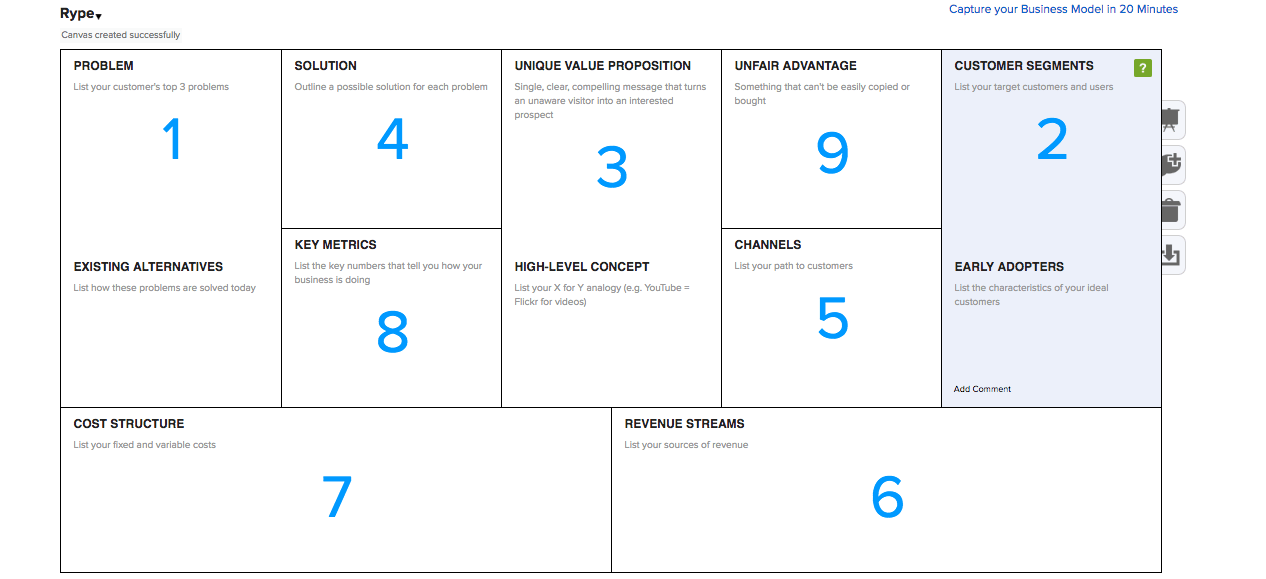
The lean canvas was introduced by Ash Maurya, as an improved iteration of the Business Model Canvas.
It’s one of the easiest and fastest way to get a high-level glance at your business idea, because you can answer in point format, and your business plan is laid out in a single page.
Once we filled out the canvas, it was time to test our hypotheses.
One of the key lessons I learned as an entrepreneur is that not everybody sees the world in the way that you do. What may seem like a great idea to you, may seem terrible to someone else.
This is why we followed Ash Maurya’s advice to test the riskiest part about your business first, instead of the easiest.
The true job of an entrepreneur is to systematically de-risk their business model over time.
- You have to derisk your idea to convince your future co-founders to quit their stable jobs and join your cause.
- You have to derisk your idea to convince customers to take a chance on your product versus the existing alternatives.
- And you have to derisk your idea to convince investors to give you money to grow your business.
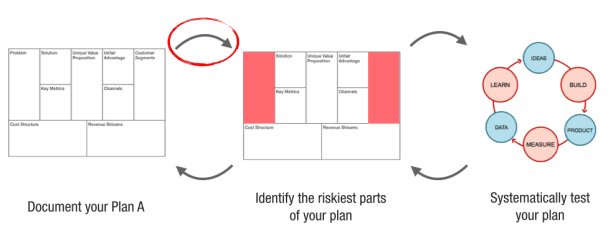
When it came to learning a language, we knew from personal experience what the problems were. People didn’t have enough time, learning through software or lectures were ineffective, and there wasn’t a trusted platform connecting professional native speaking teachers and language learners together.
The riskiest part was our unique value proposition: how we were going to be different, unique, and provide 10x value compared to what’s already out there.
We won’t bore you with the long story, but after many restless nights of research, throwing out countless terrible ideas, and speaking with fellow language learners, we had something worth testing.
The next step was…
Getting The Landing Page Launched
I should note that there’s countless ways to get a landing page up without coding.
Some of the tools include:
- WordPress.org (what we used)
- Optimize Press (what we used – wordpress plugin)
- Visual Composer (wordpress plugin)
- Squarespace
- Wix
- Weebly
- Instapage
- Unbounce
- Strikingly
- Leadpages
The list of free and cheap options is limitless, and you can use any of these to prove out your idea with a website.
Here’s a look at how we were setting up our website.
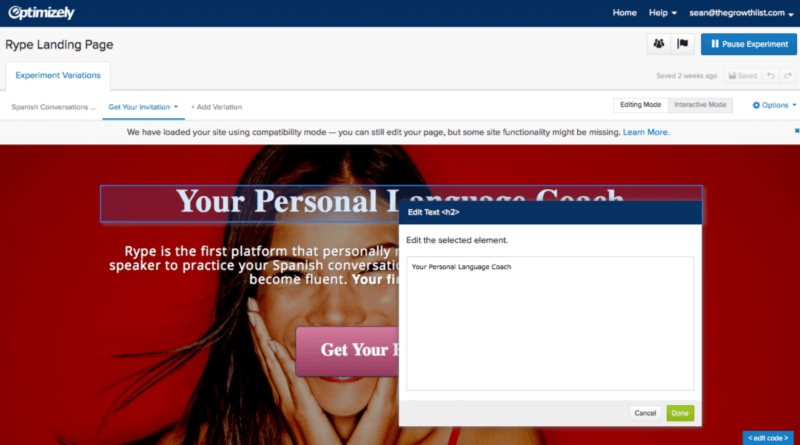
Here’s what our first website looked like.

We wanted to accomplish two things with the landing page.
Getting people to:
- Fill out their emails
- Then set up a Skype/phone call to get qualitative feedback
Now that we had a splash page, we needed targeted traffic.
I remembered searching on Quora to find ways to learn a language, and realized that there must be thousands of people who are looking for the same thing.
I began to answer dozens of questions that Quora users asked regarding learning a language, and wrote a quick sentence at the end mentioning Rype, offering a free lesson.

In 24 hours, there was over 50+ people signed up, and we were off & running.
Asking For The Sale
About 30 of those 50 people ended up taking advantage of the free trial, and 20 of them graciously offered to get on a quick call.
The purpose of this call was to not just get qualitative feedback about our unique value proposition, but to ask for the sale (the hardest part for most people).
There were two things that I wanted to avoid though.
1) getting paid from friends & family
2) giving discounts
I knew that if we could convince early adopters that we’ve never met, to pay full price for our solution, then we had something that late adopters would potentially buy once we improved our product & offering.
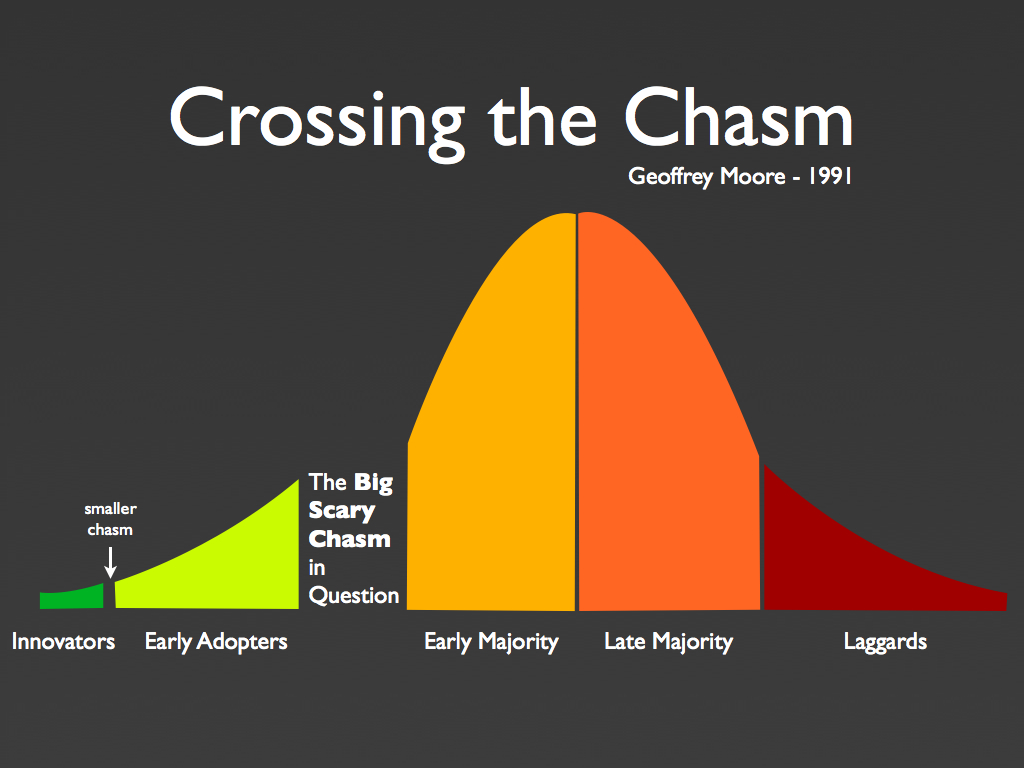
But we felt disheartened when the first five people we spoke to weren’t as excited about the solution as we thought they’d be.
Then we realized something. The conversation was all about us. Not the customer.
Instead of asking them about their problems, we were only talking about our solution.
When we started asking open-ended questions around their problems, everything shifted.
These were questions like:
“How do you currently find native speaking teachers to learn Spanish?”
“What has been your experience like with your previous solution? i.e. Rosetta Stone, books, orDuolingo”
“Why do you think you stopped learning a language previously?”
We spent 25 out of the 30 minutes around their problem, and only the last 5 around our product and vision.
To illustrate how powerful this shift in approach was, while none of the first five people signed up, 8 out of the next 15 people became our first paying customers.
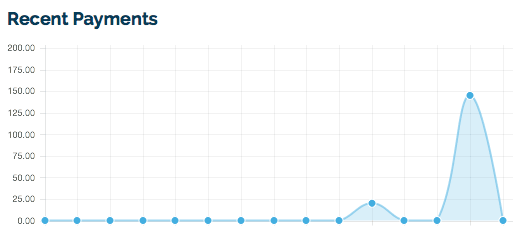
What’s Next?
The purpose of this post is to help you get your idea off the ground.
By sharing the story of how we launched our startup by doubling down on our strengths, we hope we inspired you in some way.
If you’re struggling to find a technical founder, or feeling incapable of bring your idea to life, remember that there are thousands of people that have already been in your shoes.
We have more abilities and resources than we give ourselves credit for. Sometimes all we need is someone who’s already been there to realize that we can one day get there.
Get the TNW newsletter
Get the most important tech news in your inbox each week.





